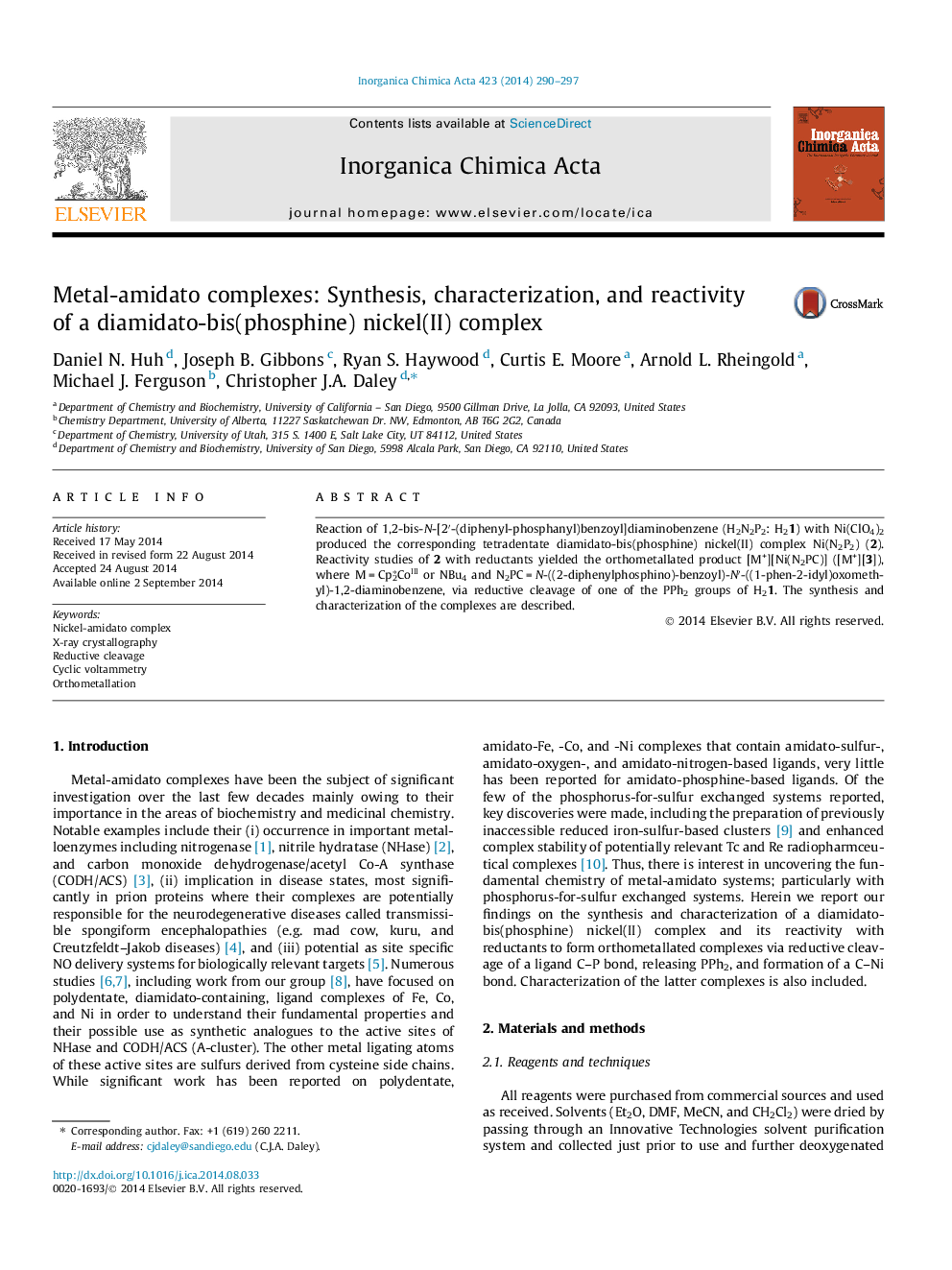| Article ID | Journal | Published Year | Pages | File Type |
|---|---|---|---|---|
| 1309470 | Inorganica Chimica Acta | 2014 | 8 Pages |
•Synthesis of 2; a tetradentate diamidato-bis(phosphine) Ni(II) complex.•Reduction of 2 to form orthometallated [M+][3] via reductive cleavage of P–C bond.•Solution (NMR) and solid state (X-ray) characterization of 2 and [M+][3] complexes.•CV studies of 2 and [M+][3] show quasi-reversible 1e− reductions at low potentials.
Reaction of 1,2-bis-N-[2′-(diphenyl-phosphanyl)benzoyl]diaminobenzene (H2N2P2: H21) with Ni(ClO4)2 produced the corresponding tetradentate diamidato-bis(phosphine) nickel(II) complex Ni(N2P2) (2). Reactivity studies of 2 with reductants yielded the orthometallated product [M+][Ni(N2PC)] ([M+][3]), where M = Cp∗2CoIII or NBu4 and N2PC = N-((2-diphenylphosphino)-benzoyl)-N′-((1-phen-2-idyl)oxomethyl)-1,2-diaminobenzene, via reductive cleavage of one of the PPh2 groups of H21. The synthesis and characterization of the complexes are described.
Graphical abstractThe synthesis of [Ni(N2P2)] (2), a diamidato-bis(phosphine) Ni(II) complex of the Süss-Fink ligand (H21), is reported. Orthometallated complexes, [Ni(N2PC)]− ([3]−), were prepared via reductive-cleavage of a PPh2 moiety from 2 using strong reductants. Complexes 2 and [3]− were characterized by NMR and X-ray diffraction analyses.Figure optionsDownload full-size imageDownload as PowerPoint slide
